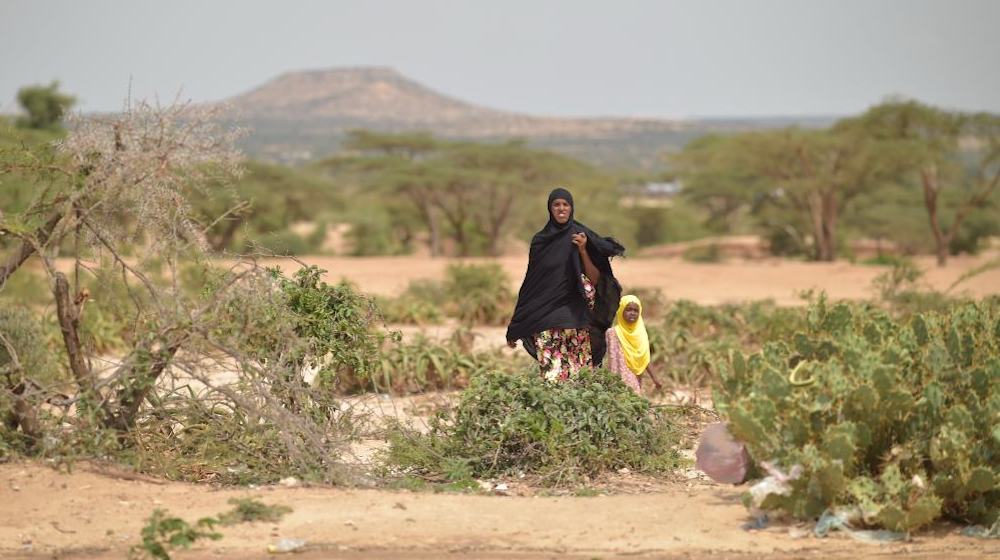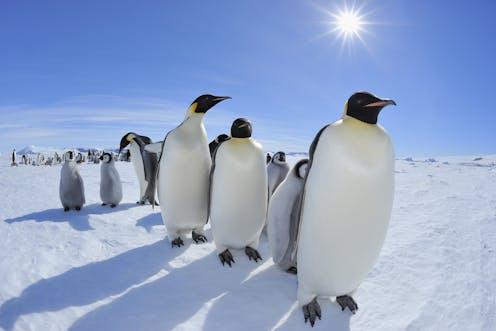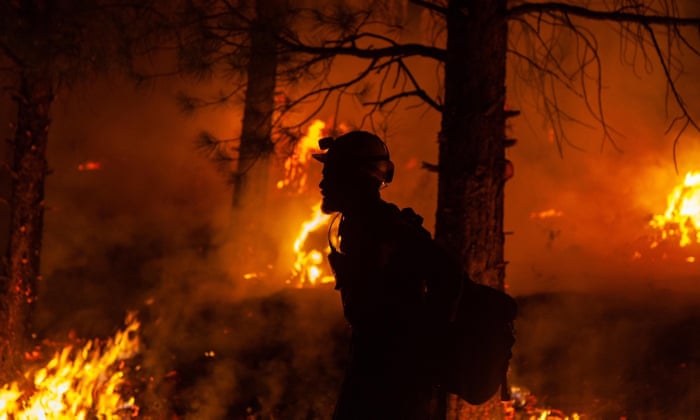First active leak of sea-bed methane discovered in Antarctica
24 Jul 2020
Researchers say potent climate-heating gas almost certainly escaping into atmosphere
The first active leak of methane from the sea floor in Antarctica has been revealed by scientists.
The researchers also found microbes that normally consume the potent greenhouse gas before it reaches the atmosphere had only arrived in small numbers after five years, allowing the gas to escape.
Vast quantities of methane are thought to be stored under the sea floor around Antarctica. The gas could start to leak as the climate crisis warms the oceans, a prospect the researchers said was “incredibly concerning”.
The reason for the emergence of the new seep remains a mystery, but it is probably not global heating, as the Ross Sea where it was found has yet to warm significantly. The research also has significance for climate models, which currently do not account for a delay in the microbial consumption of escaping methane.
The active seep was first spotted by chance by divers in 2011, but it took scientists until 2016 to return to the site and study it in detail, before beginning laboratory work.
“The delay [in methane consumption] is the most important finding,” said Andrew Thurber, from Oregon State University in the US, who led the research. “It is not good news. It took more than five years for the microbes to begin to show up and even then there was still methane rapidly escaping from the sea floor.”
The release of methane from frozen underwater stores or permafrost regions is one of the key tipping points that scientists are concerned about, which occur when a particular impact of global heating becomes unstoppable.
“The methane cycle is absolutely something that we as a society need to be concerned about,” said Thurber. “I find it incredibly concerning.”
Very little was known about the Antarctic methane cycle but the good news, he said, was that the new seep provided a natural laboratory for further research.
Why the new seep formed is unknown. “That is a mystery that we still do not have an answer to,” Thurber said. “It is on the side of an active volcano but it doesn’t seem like it came from that.”
Prof Jemma Wadham, at the University of Bristol, UK, who was not involved in the study, said: “Antarctica and its ice sheet are huge black holes in our understanding of Earth’s methane cycle – they are difficult places to work.
“We think that there is likely [to be] significant methane beneath the ice sheet,” she said. “The big question is: how large is the lag [in methane-consuming microbes] compared with the speed at which new leaks of methane might potentially form in the wake of retreating ice?”
The research, published in the journal Proceedings of the Royal Society B, reports the discovery of the methane seep at a 10-metre (30ft) deep site known as Cinder Cones in McMurdo Sound. It is a 70-metre long patch of white microbial mats, and a second seep was found during the 2016 expedition.
“We stumbled upon the methane seep at a site that has been dived at since the 1960s and it had just turned on,” said Thurber. There were no bubbles of methane, he said. “Most of the methane in many seeps actually comes out in what we call diffuse flows. So it’s just dissolved in the water.”
The source of the methane is probably decaying algae deposits buried under sediments and is likely to be thousands of years old. In most parts of the oceans, methane leaking from the sea bed is consumed by microbes in the sediment or the water column above. But the slow growth of microbes at the Cinder Cones site, and its shallow depth, means methane is almost certain to be leaking into the atmosphere.
Thurber said the first microbes to grow at the site were of an unexpected strain. “We’re probably in a successional stage, where it may be five to 10 years before a community becomes fully adapted and starts consuming methane.”
Widespread active methane seepage was reported off the sub-Antarctic island of South Georgia in 2014, a first for the Southern Ocean. “But that’s really a different oceanographic area than the Antarctic continent,” Thurber said.
Wadham said the five years for which the Cinder Cones seep has been studied is a short amount of time. “So it would be good to see what happens to this seep into the future. The discovery also makes you wonder if these features are more common than we might think around Antarctica, but are rarely stumbled upon.”
However, the researchers are unlikely to be able to return to Antarctica soon. The continent is currently free of coronavirus but the risk of infection has disrupted expedition plans.
In the weeks and months ahead, our journalism will investigate the prospects for a new green settlement. We will showcase the big thinkers and protagonists and amplify the arguments for authorities everywhere to consider as they lead us out of coronavirus.
Our credentials suit us well to the task: we are independent, we have no owners, no paymasters or oligarchs pulling the strings. We have committed to carbon neutrality by 2030, divested from the oil and gas sectors and renounced fossil fuel advertising. But at this crucial moment, news organisations like ours are facing a daunting financial challenge. As businesses everywhere feel the pinch, the advertising revenue that has long helped to sustain our work has plummeted. We need you to help fill the gap.
Our journalism is open to all because we believe everyone deserves access to factual information, regardless of where they live or what they can afford to pay. If you can afford to, we hope you will consider supporting our journalism today.
The Guardian believes that the climate crisis we face is systemic. We will inform our readers about threats to the environment based on scientific facts, not driven by commercial or political interests. We will keep reporting on the efforts of individuals and communities around the world who are fearlessly taking a stand for future generations and the preservation of human life on earth. We want their stories to inspire hope.
We need your support to keep delivering this kind of open, committed independent journalism. Every reader contribution, however big or small, is so valuable. Support the Guardian from as little as $1 – and it only takes a minute. Thank you.
The researchers also found microbes that normally consume the potent greenhouse gas before it reaches the atmosphere had only arrived in small numbers after five years, allowing the gas to escape.
Vast quantities of methane are thought to be stored under the sea floor around Antarctica. The gas could start to leak as the climate crisis warms the oceans, a prospect the researchers said was “incredibly concerning”.
The reason for the emergence of the new seep remains a mystery, but it is probably not global heating, as the Ross Sea where it was found has yet to warm significantly. The research also has significance for climate models, which currently do not account for a delay in the microbial consumption of escaping methane.
The active seep was first spotted by chance by divers in 2011, but it took scientists until 2016 to return to the site and study it in detail, before beginning laboratory work.
“The delay [in methane consumption] is the most important finding,” said Andrew Thurber, from Oregon State University in the US, who led the research. “It is not good news. It took more than five years for the microbes to begin to show up and even then there was still methane rapidly escaping from the sea floor.”
The release of methane from frozen underwater stores or permafrost regions is one of the key tipping points that scientists are concerned about, which occur when a particular impact of global heating becomes unstoppable.
“The methane cycle is absolutely something that we as a society need to be concerned about,” said Thurber. “I find it incredibly concerning.”
Very little was known about the Antarctic methane cycle but the good news, he said, was that the new seep provided a natural laboratory for further research.
Why the new seep formed is unknown. “That is a mystery that we still do not have an answer to,” Thurber said. “It is on the side of an active volcano but it doesn’t seem like it came from that.”
Prof Jemma Wadham, at the University of Bristol, UK, who was not involved in the study, said: “Antarctica and its ice sheet are huge black holes in our understanding of Earth’s methane cycle – they are difficult places to work.
“We think that there is likely [to be] significant methane beneath the ice sheet,” she said. “The big question is: how large is the lag [in methane-consuming microbes] compared with the speed at which new leaks of methane might potentially form in the wake of retreating ice?”
The research, published in the journal Proceedings of the Royal Society B, reports the discovery of the methane seep at a 10-metre (30ft) deep site known as Cinder Cones in McMurdo Sound. It is a 70-metre long patch of white microbial mats, and a second seep was found during the 2016 expedition.
“We stumbled upon the methane seep at a site that has been dived at since the 1960s and it had just turned on,” said Thurber. There were no bubbles of methane, he said. “Most of the methane in many seeps actually comes out in what we call diffuse flows. So it’s just dissolved in the water.”
The source of the methane is probably decaying algae deposits buried under sediments and is likely to be thousands of years old. In most parts of the oceans, methane leaking from the sea bed is consumed by microbes in the sediment or the water column above. But the slow growth of microbes at the Cinder Cones site, and its shallow depth, means methane is almost certain to be leaking into the atmosphere.
Thurber said the first microbes to grow at the site were of an unexpected strain. “We’re probably in a successional stage, where it may be five to 10 years before a community becomes fully adapted and starts consuming methane.”
Widespread active methane seepage was reported off the sub-Antarctic island of South Georgia in 2014, a first for the Southern Ocean. “But that’s really a different oceanographic area than the Antarctic continent,” Thurber said.
Wadham said the five years for which the Cinder Cones seep has been studied is a short amount of time. “So it would be good to see what happens to this seep into the future. The discovery also makes you wonder if these features are more common than we might think around Antarctica, but are rarely stumbled upon.”
However, the researchers are unlikely to be able to return to Antarctica soon. The continent is currently free of coronavirus but the risk of infection has disrupted expedition plans.
We've never had a better chance ...
… to make a greener world. Covid-19 has delivered unusual environmental benefits: cleaner air, lower carbon emissions, a respite for wildlife. Now the big question is whether we can capitalise on this moment. The Guardian aims to lead the debate from the front.In the weeks and months ahead, our journalism will investigate the prospects for a new green settlement. We will showcase the big thinkers and protagonists and amplify the arguments for authorities everywhere to consider as they lead us out of coronavirus.
Our credentials suit us well to the task: we are independent, we have no owners, no paymasters or oligarchs pulling the strings. We have committed to carbon neutrality by 2030, divested from the oil and gas sectors and renounced fossil fuel advertising. But at this crucial moment, news organisations like ours are facing a daunting financial challenge. As businesses everywhere feel the pinch, the advertising revenue that has long helped to sustain our work has plummeted. We need you to help fill the gap.
Our journalism is open to all because we believe everyone deserves access to factual information, regardless of where they live or what they can afford to pay. If you can afford to, we hope you will consider supporting our journalism today.
The Guardian believes that the climate crisis we face is systemic. We will inform our readers about threats to the environment based on scientific facts, not driven by commercial or political interests. We will keep reporting on the efforts of individuals and communities around the world who are fearlessly taking a stand for future generations and the preservation of human life on earth. We want their stories to inspire hope.
We need your support to keep delivering this kind of open, committed independent journalism. Every reader contribution, however big or small, is so valuable. Support the Guardian from as little as $1 – and it only takes a minute. Thank you.








